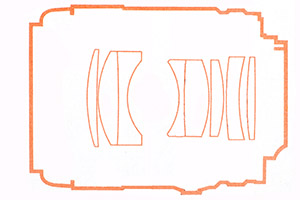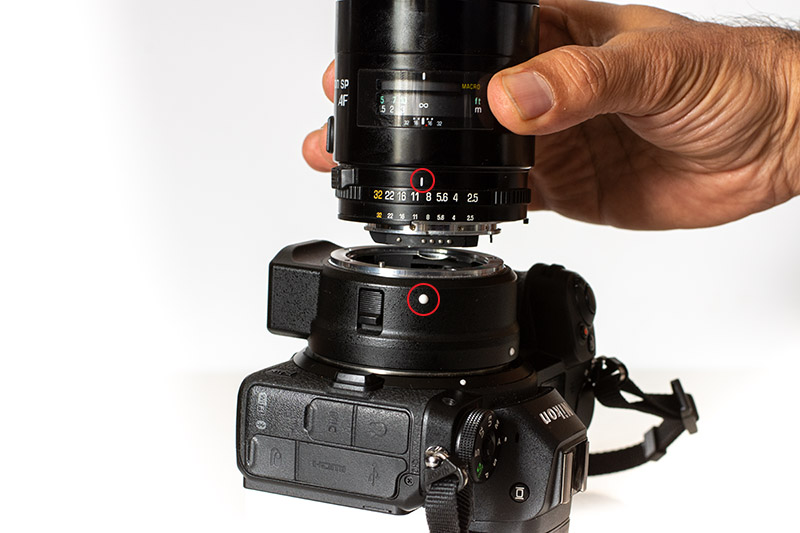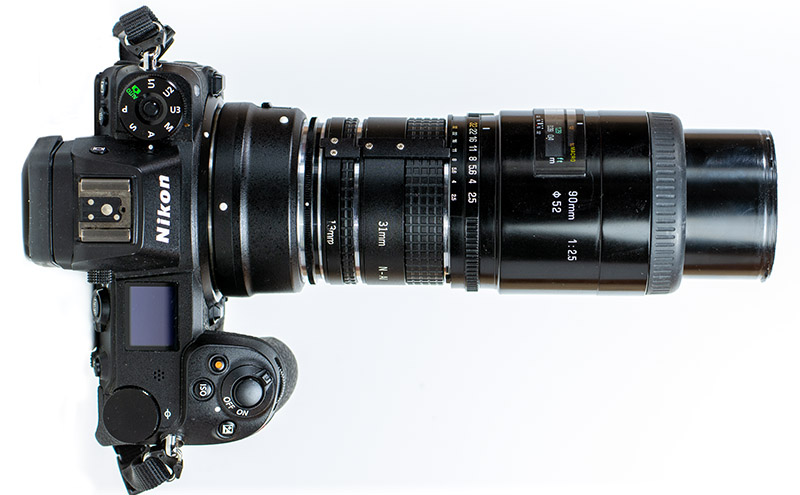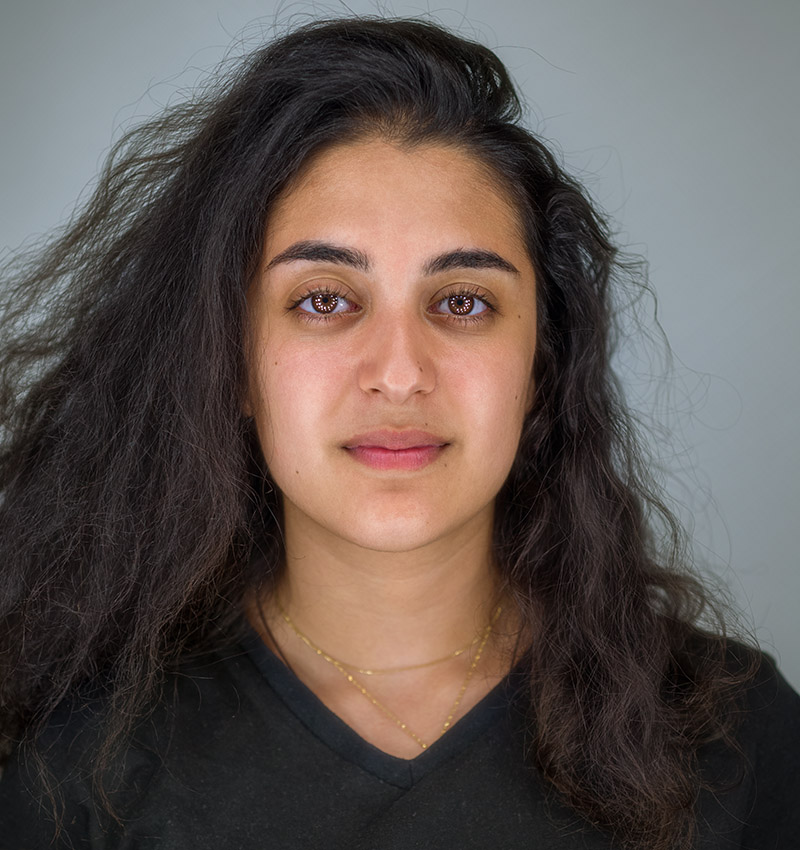Introduction

Tamron made a big impression on the market when they launched their SP 90mm F/2.5 back in 1979. Small, flexible and very sharp. It is originally designed for 35mm cameras (full-frame) but can also be used on APS-C cameras with an equivalent focal length of 135mm. It is a classic dual purpose 90mm macro lens. The lens manages to do a 1:2 magnification, almost macro and many call it for a macro lens although Tamron themselves did not do that and only talked about it as “a medium telephoto portrait lens”. (They called the previous versions, also with 1:2 magnification, “tele-macro” though.) Anyhow, it has long been the general opinion that it has very good close-up capabilities and it can do 1:1 macro with some help as we will see. It is also very suitable for use as a portrait lens at normal distances. The lens has been updated several times since its first release and changed look and optical formula during over 40 years of its existence. Each new version could have an additional feature, improved optical performance, just a cosmetic update, or a combination of them. We are going to look at the first AF version of this lens from 1990. The lens has been made with native mounts for Nikon F, Pentax K and Minolta/Sony A. I test a Nikon mount lens mostly on a FF mirrorless Nikon Z6 and APS-C DSLR Nikon D7200 (F mount) but I also include images taken with FF DSLR Nikon D600 (also F mount).
Sample Images







Most of the sample images in this review and many more can be found in higher resolution here.
Contents
Specifications
Focal Length: 90mm
Aperture Range: 2.5 – 32
Number of Aperture Blades: 9
Min Focus: 0.39m
Filter Size: 52mm
Lens Mount: Nikon F, Pentax K and Minolta/Sony A
Weight: 450g
Length: 86.5mm
Max. Diameter: 66mm
Elements/Group: 8/6

Variations

From 1979 to 2023, 10 different variants of Tamron 90mm have seen the light of the day. The third one in the list (Model 52E from 1990) is the one reviewed here. Model 152E from 1994 is the same lens but with slightly modified design of the lens barrel. Earlier models 52B and 52BB share the same optical formula with 8 elements in 6 groups but are manual focus only. 52B has only 8 aperture blades instead of 9 but the later 52BB has 9 blades.
| Name | Model | Announced | Elements | Groups |
| SP 90mm F/2.5 Adaptall-2 | 52B | 1979 | 8 | 6 |
| SP 90mm F/2.5 Adaptall-2 | 52BB | 1988 | 8 | 6 |
| SP AF 90mm F/2.5 | 52E | 1990 | 8 | 6 |
| SP AF 90mm F/2.5 | 152E | 1994 | 8 | 6 |
| SP 90mm F/2.8 MACRO [1:1] Adaptall-2 | 72B | 1996 | 10 | 9 |
| SP AF F/2.8 Macro [1:1] | 72E | 1996 | 10 | 9 |
| SP AF 90mm F/2.8 Macro [1:1] | 172E | 2000 | 10 | 9 |
| SP AF 90mm F/2.8 Di MACRO 1:1 | 272E | 2004 | 10 | 9 |
| SP AF 90mm F/2.8 Di MACRO 1:1 VC USD | F004 | 2012 | 14 | 11 |
| SP AF 90mm F/2.8 Di MACRO 1:1 VC USD | F017 | 2016 | 14 | 11 |
Handling
The lens is rather small but when held in hand it feels heavier than it looks like due to the relatively many glass elements. The housing looks cheap and plasticky with a smooth surface that is very prone to fingerprints. It comes with a very weak plastic lens cap and lens hood that does not seem to be designed very well as they don’t fit on the lens with ease. A missing detail on the Nikon mount version of the lens is that there is no mount positioning index marking on the lens to fit it on the camera. It can be irritating the first time (if not even many times after that) to wonder in which position it should be mounted. You need to align the aperture index line on the lens with the mount positioning index point on the camera.

On a Nikon Z camera you need a F-to-Z adapter that is about 33mm and when focused to MFD the lens extends about 28mm and the lens hood is about 43mm. So, The adapter + extension + lens hood is longer than the lens focused at infinity.

That is not all that can add to the length though. As mentioned earlier the lens magnification is “only” 1:2, if you want a real macro at 1:1 then you need to add an extension tube between the lens and camera. Tamron has made a dedicated extension tube for its predecessor, the “Tamron 18F extension tube” but actually any extension tube with a length of 45 mm will do. I have an old extension tube set of three tubes (13mm + 21mm + 31mm), from which I have used the shortest (13mm) and longest 31mm to get a 44mm extension tube for 1:1 work and then it looks like this on a Nikon Z camera without the lens hood.

So, although the lens itself is very compact, it can be of considerable size in the field, when used on mirrorless cameras. On a Nikon DSLR it does look and feels more balanced as there is no need for any adapter.

There is no vibration control system in the lens. This is one of the reasons why the lens is so small and another reason is that it has no internal autofocus motor and relies on the camera body’s autofocus motor of screw type. This is an issue on Nikon mirrorless cameras as they do not have any built-in screw type autofocus motor either and therefore the lens has to be focused manually on Z cameras. This is not optimal though; the lack of autofocus motor has made the lens designers make the focusing ring very narrow and light with almost no resistance and with a relatively small throw (207 degrees) for a macro lens. None of these are favorable for manual focusing especially as about 100 degrees of the total 207 degrees throw are for close focusing distance (0.39m to 0.55m, 50% of throw for only 16 cm, which actually very good for manual macro focusing), next 90 degrees for 0.55m to about 3m and finally only 15 degrees throw for the range 3m to infinity. In other words, some practice is required to nail the focus manually from about 2 meters and beyond.

The autofocus on cameras that have a screw type autofocus motor is a little noisy and in difficult situations can do some chasing from MFD to infinity and back a few times but when it finds the focus it is tack sharp. To speed up the focusing and prevent it chasing over the whole focusing range there is an AF Range Selector knob on the lens barrel that lets you limit the autofocus range. You can switch it to LIMIT or FULL. For shorter distances set the focus distance scale between 0.39m and 0.55m then set the selector switch to LIMIT or for normal shooting set the distance scale between 0.55m and infinity then set the Selector to LIMIT. This way you have limited the range to almost half.

Aperture ring click stops only at full stops but you can set the aperture value electronically in 1/3 of a stop from the camera in program and shutter priority modes. For doing so you need to set the aperture ring to its largest number (32), which has an orange color to differentiate it from the other numbers. Otherwise the aperture that is set on the ring is used. To avoid moving the aperture ring from this position unintentionally the aperture ring has an AE lock switch that you can slide to lock it in position, where it reveals an orange mark in the same color as the max aperture number (32) to clearly show that AE is engaged.
There is a strange thing with the max aperture value (f/2.5) on this lens. Normally when a prime lens is specified to have a max aperture of a certain value then it is called fixed aperture and when that value is set on the lens, that is the chosen value all the time. It’s given, right? Not on this lens though, as the max aperture of f/2.5 changes as you focus closer towards the MFD. At infinity down to about 2m you have the max aperture of f/2.5, focus to about 1.5m and the widest aperture has decreased to f/2.7 and at MFD the widest aperture is as little as f/3.8 in spite of your set value at f/2.5. But why? and how? You may ask. Well, this is because the aperture mechanism (the iris) is built in the extending part of the lens, as you focus towards MFD the lens extends and the iris together with the extending part moves away from the camera and the rear lens elements. OK, so what? Does the iris’s size change? One may ask. No, while the iris’ actual size does not change, the increasing distance between the iris and the lens rear elements makes the magnification of the iris less on the sensor/film. That in turn means the effective size of the iris to the sensor gets smaller and the effective aperture value becomes less.

Well, change of true aperture value at very close distances happens to almost all macro lenses but as far as I know only Nikon cameras show the true aperture, maybe some other brands started doing so too.
The lens has electronic contacts and transfers full EXIF data to the cameras and also allows control of the aperture value from the camera, both on DSLR and mirrorless, provided using the adapter that also have electronic contacts (Nikon FTZ / FTZ II).
Optical Features
Sharpness (infinity)
Let’s look at the infinity sharpness both on fullframe and APS-C cameras.
- F/2.5: The more than 30 years old lens delivers good sharpness on a fullframe camera over the whole image (center, mid-frame, and corner), it sure doesn’t happen that often. Wow!
- F/4: Still good sharpness, a little better than at f/2.5, albeit not much difference.
- F/5.6: Better at f/5.6
- F/8: Excellent sharpness everywhere.
- F/11: Still excellent but diffraction starts creeping in, although excellent, not as good as at f/8.
- F16: Very good but a tad softer than f/11
- F22-F32: Good but softer for each stop and at f/32 the corners are just acceptable.
On the APSC camera it is more or less the same story, but you can start seeing this lens’s age as it doesn’t look as crisp when viewed at 100% anymore compared to the 24mp fullframe Z6, this is because the pixel density on D7200 is like a 56Mpx fullframe camera.
In general the contrast is very good. This lens is very sharp.

Sharpness (Portrait)
Sharpness is very good wide open at 2.5 (practically at 2.7) and excellent at f/4. Even here, like what we saw earlier in the infinity test, the sharpness is equally good in the center, inner mid-frame and outer mid-frame.

Sharpness (Close-up)
Very good sharpness at f/2.5 (practically f/3.8) and f/5.6. Excellent sharpness at f/8.
Nikon D600 (FF) | Tamron SP AF 90/2.5 | f/11 | Focus Stacked from 25 images.
Just to show the magnification of the lens (1:2) compared to true macro (1:1) that is achieved here with the help of a 44mm extension tube. First image shot at 0.55m to have a perspective that gives a magnification of 1:4, second at MFD (1:2), third with 44mm extension tube (1:1).
Shots taken with Nikon Z6, Tamron SP AF 90/2.5 at f/11.
Lens Distortion

This lens has a very mild to negligible pincushion distortion, which normally can be ignored or in very critical applications easily corrected in post. This is quite good.

Vignetting

At f/2.5 there is about 0.9 stop of light fall-off, which improves to 0.5 stop at f/4 and from f/5.6 and smaller apertures becomes negligible. Very good indeed.
Flare Resistance
You get quite a lot of flaring with this lens. Unfortunately you can get all kinds of flares with this lens. Something that I have noticed is that besides the veiling flare and ghosting, you can get a huge amount of lens flare as soon as a strong light point or sun comes into the image. For using the lens outdoors it is strongly recommended to have the lens hood on at all times. Still, that kind of performance is not out of the ordinary for a macro lens but it is on the worse side of the average compared to more modern lenses.
Chromatic Aberrations
Longitudinal chromatic aberration is a bit of an issue with this Tamron. As you can see from the image below there are some strong purple/pink and green fringing depending on where in the image it is. Even stopped down to 5.6 they remain there. It is reduced at f/8 and almost gone by f/11. Not so strong in this area but hey, the lens is more than 30 years old and it’s starting to show its age a little.
Nikon 7200 | Tamron SP AF 90/2.5 | f/2.5
Coma

While the coma correction should not have the highest priority for the applications this lens is normally used in, the lens shows no weakness here. There is almost no coma aberration present. A welcome bonus really.
Sunstars
Creating sunstars is really not this lens’s strongest ability. With its 9 rounded aperture blades it is impossible to get any sunstars with this lens.
Focus Breathing
There is a lot of focus breathing with this lens especially at close distances but that is completely normal for a macro lens, which is not so good for videographers. Normally the focus breathing of a lens is of a lesser problem for still photographers, most of the people do not even notice it although their lenses suffer from it. You can just reframe your scene and that’s all about it. But in cases where you want to do focus stacking you will notice the pain. And in case of this lens, being a macro lens, it can be a problem if you do a lot of focus stacking. Of course it can also be a problem in any other cases of focus stacking situations (e.g. product photography, architecture or landscape photography) but normally the lenses breathe less near infinity and more near MFD. In the following examples you see two cases; a landscape and a closeup shot. Even if the second one is far from being macro, where you have even more severe problems, you will get the point.
Image 1: Nikon Z6, Tamron SP 90/25 at f/2.5
Image 2: Nikon Z6, Tamron SP 90/25 at f/5.6
Bokeh

At f/2.5 you can get some nice out of focus backgrounds even in difficult situations like the one above. Even at smaller apertures the bokeh is fine. Generally the bokeh is quite nice and smooth. I would say this lens is as much (if not more) a portrait lens as a macro lens because of its smooth bokeh, in my eyes anyway.
All three images taken with Nikon Z6 | Tamron 90/2.5 | f/2.5
Conclusion
| WHAT I LIKE | NOT GOOD / NOT BAD | WHAT I DON'T LIKE |
|---|---|---|
| Bokeh Size Price Sharpness | Autofocus Build quality handling | Autofocus compatibility with Nikon Z Manual Focusing Sunstar CA Flare Resistance |
I bought this lens in 1992 and loved it from the first day and although it may be outdated fo a long time now, I am still using it. It is relatively very sharp (although there are sharper lenses around nowadays) and it is very small, which I personally value a lot. I have another, newer and technically better 105mm macro lens, but this is the lens I always choose when going out or travelling because of its compact size.
Unfortunately the need of an adapter on mirrorless cameras defies this advantage to some degree. And also the fact that autofocus does not work on my mirrorless camera and the focusing experience for anything further than 2-3m degrades its value for me. But it still can deliver fantastic images.
The conclusion is that this lens is very good. Not perfect but very good, even by today’s standards, especially considering its price. It can absolutely be used on a modern digital camera, if you can cope with its focusing. It is a dual purpose lens; a (semi) macro lens and a regular 90mm lens, perfect for portraits. You can find this version for $50-$60 but maybe not that easily, as it was in production only for a couple of years.
You can buy a Tamron SP AF 90mm f2.5 for $50-150 depending on its condition from the following affiliate links:
Buy from: ebay.com, ebay.de, ebay.co.uk, ebay.com.au (affiliate links)

Alternatives
Macro lenses in the 90mm-100mm focal range are some of the most popular lenses available and the market is a little crowded actually. So it will be very difficult to cover all the alternatives and therefore we take just a few from the crowd.
SP AF 90mm F/2.8 Macro [1:1]
The most obvious alternative would be one of the successors of the SP 90/2.5, namely SP 90/2.8 (6 different models). They all have up to 1:1 magnification without the need of any extension tube but are about 2 to 15 times more expensive depending on the model and condition on the used market.
Buy new: Amazon.com, Amazon.de (affiliate links)
Buy used: ebay.com, ebay.de, ebay.co.uk, ebay.com.au (affiliate links)
Tokina 2.5/90 Macro:
Another legacy lens which is a lot more affordable (still not that affordable for being more than 20 years old). Apart from that the Tokina is a pretty remarkable lens even today. 530 g + adapter | $120 – $300 used
Buy from: ebay.com, ebay.de, ebay.co.uk, ebay.com.au (affiliate links)
Sigma 105mm f2.8 DG Macro HSM
More modern lens, goes to 1:1, autofocus, optical image stabilizer
Buy new: Amazon.com, Amazon.de
Buy from: ebay.com, ebay.de, ebay.co.uk, ebay.com.au (affiliate links)
Zeiss Makro Planar 2/100:
The fully manual Zeiss which only focuses to 1:2 is a bit larger and heavier (with adapter). High amount of axial CA, otherwise awesome performance and wide range of applications.
660 g + adapter | about $750 used |
Buy new: Amazon.com, Amazon.de (affiliate links)
Buy used from: ebay.com, ebay.de, ebay.co.uk, ebay.com.au (affiliate links)
Tokina Firin 2.8/100:
Review | 570g | $599
Buy new: Amazon.com, Amazon.de
Buy from: ebay.com, ebay.de, ebay.co.uk, ebay.com.au (affiliate links)
Laowa 100mm f2.8 2x Macro:
A lens which goes to 2:1 (2x) and is super sharp, especially in the macro range. If you need a short telephoto lens with 2x magnification, which also focuses to infinity, it’s a good choice. It is also easily subject to veiling flare.
Review | 657g | about $450
Buy new: Amazon.com, Amazon.de (affiliate links)
Buy from: ebay.com, ebay.de, ebay.co.uk, ebay.com.au (affiliate links)
More Sample Images










Most of the sample images in this review and many more can be found in higher resolution here.
Further Reading
- Laowa FFII 90mm F2.8 CA-Dreamer Macro 2x: Getting Close!
- Review: Sigma 180mm 5.6 APO Macro (MF)
- Laowa 100mm F2.8 CA-Dreamer Macro 2x: A Review
- Review: Tokina Firin 100mm F2.8 FE Macro
- Review: Zeiss Makro-Planar 100mm F2
Support us
Did you find this article useful or just liked reading it? Treat us to a coffee!
![]()

(Donations via Paypal)
This site contains affiliate links for which I may receive a small commission if you purchase via the links at no additional cost to you. This helps support the creation of future content.



































thank you for the nice, detailed review Martin.
I was considering the 52B(B) a while ago, but went for the Tokina 90f2.5 in the end, which is a pretty amazing lens but significantly more expensive.
Not sure how much i would be willing to pay for an screw drive AF lens like the 52E with all the negative aspects that come with it that you also mentioned.
I pretty much always use MF for macro and dont see how AF could be useful even from an lens with internal motors like the more recent Tamrons.
Optically it seems very good, so it could be a bargain, if you can find one for cheap.
Thanks. If you see the lens as a pure macro lens then you’re right, a manual focus lens would be better but as I mentioned in the review I see this lens as much or a little more as a portrait lens and in that case I like to have the autofocus option on the lens.
About: I pretty much always use MF for macro and dont see how AF could be useful even from an lens with internal motors like the more recent Tamrons.
Bought a second hand Sony 90mm Macro and very happy with the Focus Stacking on my A7r5. Don’t understand why Sony doesn’t implement it on “older” body’s.
But for regular macro…totally agree.
See for some stacked images with the Sony f4 12-24 (second hand as well).
Normally autofocus is useless for extreme macros as mention but there are softwares that automatizes focus stacking . Those used the lenses autofocus to take several pictures with different focus, so neither the camera or subject moves.
Hi Martin,
Thank you for that detailed and informative review. I owned this lens in the first version (52B) many years ago. As far as I remember I wasn´t disapointed. The only weakness were the insufficient coatings, but the direct competitors, the Vivitar 2,5/90, and the Tokina 2,5/90 weren´t better either…
I´m still convinced, that the Tamron is one of the best macro lenses, when you are on budget. Your review proved that.
Greetings to Sweden and keep on reviewing. You do a great job.
Best regards,
Christian
Thanks Christian. 35 years ago there were not any lens with good coatings as we are used to today.
greetings from Sweden.
Martin
Thanks for the review of this interesting lens Martin. I think I still prefer my Tokina 90/2.5 as it has the best microcontrast and image fidelity that I have ever seen in any lens.
Do you get the blue dot artifact at the center of the image? I have the 52B which does that on a Sony A7, the 72B version doesn’t.
No, I don`t get any dot artifacts in the images.
every single image in this review is nothing short of stunning. outstanding writing as well, one of my favorite things about this site is the writing and images are so enjoyable and so I read everything even if I have no intention of ever buying the lens in question. glad to see you continuing the trend!
Thanks Joel
Thanks for the review and photos! Mechanical quality and feel of the first 52b version are nothing but amazing! Performance at f2.5 is at least acceptable for today’s standards, little hazy but impressive for its age! Not as sharp compared to its AF versions wide open but in my opinion better highlight bokeh quality. From f4 and on i doubt that you could tell the difference between MF and AF versions, apart from better contrast and flare control in favor of AF ones.
I do believe though that the second version of 1988, 52bb, has 9 aperture blades and not 8 as you pointed in your review.
Thanks. Regarding 52bb blades, I found two sites with databases over huge number of lenses that say it has 8 blades, on shop site says it has 9. Otherwise info is scarce, I put a question mark in the review
Th 52BB has 9 blades. I just counted :-).
Thanks for the confirmation.
I guess you know that the Minolta (Sony) 100mm 1:2.8 Macro (8/8 Elements) is almost better in every regard, purple fringing and CA is better corrected in my opinion. It got mentioned quite a lot In the comments by the way 🙂
It’s possible, I have never used it myself though. There are so many good dual purpose macro/portrait lenses out there and you can easily fall in love with the one that you get.
that’s very true. Thank you for your nice review Martin!
Very nice review with great sample pictures.
Thanks Dirk.
Or perhaps better in English:
https://www.ebay.de/itm/386783454483
This has several samples that appear to be stolen from this test. There’s no need to make my comments public, I just couldn’t find any other way to get in touch.
Thanks Wolfgang, they are there without permission, I wish (s)he had asked first.
Unfortunately, Ebay encourages this behavior by saying as long as they are not selling the pictures, it is not a big deal, and if someone uploads pictures to Ebay, then Ebay or any of its users are allowed to use those pictures for their listings.
I have contacted the seller though, and asked him to remove the pictures.
Cheers,
Martin
I totally agree (not that this is so important, everyone is entitled to their own opinions, whatever they are) it is a good lens whose best quality is, from my point of view, the color rendering, I bought it used, I use it with sony leea4 (in my case the af works well), of course it is still a quality lens, and even in my case if I compare it with the sigma 105 dg dn macro sony fe it is qualitatively inferior it does not have a 1:1 but 1:2 and yet I too, like the author, appreciated it.